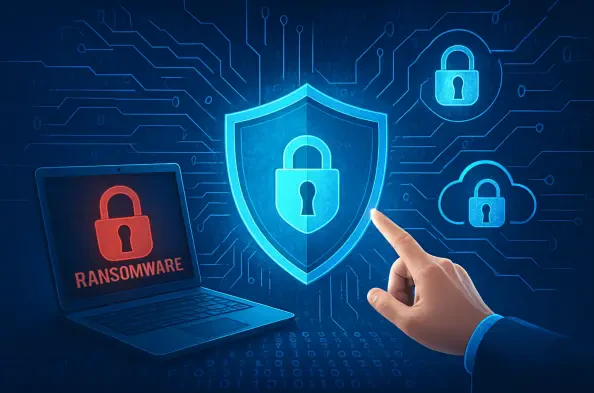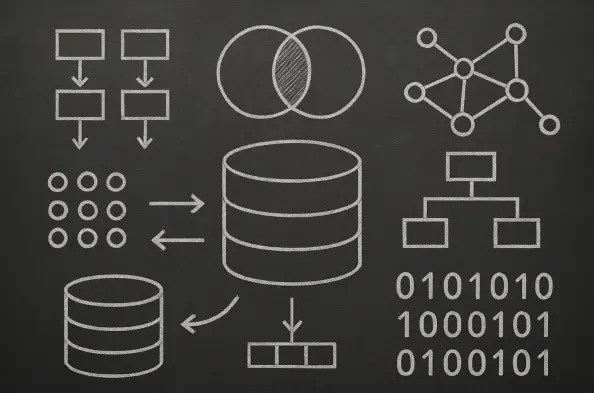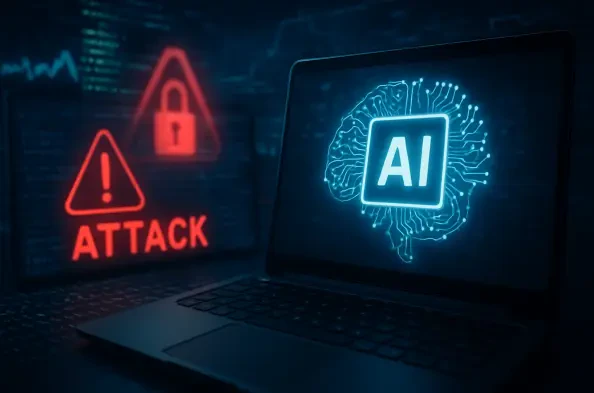In an era where digital threats loom larger than ever, ransomware stands out as a particularly insidious danger, encrypting critical data and holding it hostage for exorbitant ransoms, leaving businesses, governments, and individuals scrambling to recover. The sophistication of these attacks has reached alarming heights, with cybercriminals deploying advanced tactics that can bypass outdated security measures in mere moments. The financial toll, coupled with operational downtime and reputational damage, underscores the urgent need for robust defenses that can keep pace with this evolving menace. Fortunately, the cybersecurity landscape offers a range of powerful tools designed to combat ransomware head-on, providing hope in an otherwise daunting scenario. This article explores the leading solutions available today, delving into their unique capabilities to prevent attacks, detect threats in real time, and ensure swift recovery when breaches occur. By examining the strengths and applications of these tools, a clearer path emerges for organizations aiming to safeguard their digital assets against one of the most pressing cyber threats of the current age.
Understanding the Ransomware Threat Landscape
Why Ransomware Is a Growing Concern
Ransomware has escalated into a critical issue for organizations worldwide, driven by increasingly complex attack methods that exploit every possible vulnerability. Cybercriminals now employ tactics like triple extortion, where they not only encrypt data but also steal sensitive information and threaten to expose it publicly unless demands are met. This multi-pronged approach amplifies the pressure on victims, as the consequences extend beyond mere data loss to include severe reputational and legal ramifications. The financial impact is staggering, often running into millions when factoring in ransom payments, downtime, and recovery costs. Traditional security measures, such as basic antivirus software, are no longer sufficient against these sophisticated threats, leaving many organizations exposed to devastating breaches. The urgency to adopt advanced protection strategies cannot be overstated, as the frequency and severity of attacks continue to rise unabated.
Another dimension to this growing concern lies in the accessibility of ransomware tools to a broader pool of attackers, making it a significant threat to all types of users. The emergence of Ransomware-as-a-Service (RaaS) platforms has lowered the barrier to entry, enabling even those with minimal technical expertise to launch highly effective campaigns. This democratization of cybercrime means that small businesses and individuals, once considered low-value targets, are now just as likely to be hit as large enterprises. Furthermore, the psychological toll on victims, combined with the potential for regulatory penalties in cases of data breaches, adds layers of complexity to an already dire situation. Addressing this threat requires a fundamental shift in how digital security is approached, prioritizing proactive measures over reactive fixes.
Emerging Attack Vectors
The methods used by ransomware attackers have diversified, exploiting an array of new vulnerabilities that challenge even the most prepared organizations, and supply chain breaches have become a favored tactic in this evolving landscape. In these breaches, attackers infiltrate a trusted vendor or partner to gain access to a larger network of targets, amplifying the scale of potential damage. Similarly, AI-powered phishing campaigns have grown eerily convincing, using machine learning to craft personalized messages that trick users into granting access or downloading malicious content. These evolving strategies highlight the need for defenses that can anticipate and adapt to unconventional entry points rather than relying solely on perimeter security. The sheer ingenuity of these attack vectors demands a corresponding level of innovation in protective technologies.
Beyond these challenges, the targeting of backups and recovery systems represents a particularly sinister development in ransomware tactics, as attackers now focus on corrupting or encrypting backup data to eliminate any chance of restoration without payment. This renders many traditional recovery plans obsolete. Additionally, the proliferation of Ransomware-as-a-Service (RaaS) has fueled a surge in attacks by providing ready-made tools and support networks for aspiring cybercriminals. This trend underscores the importance of securing every aspect of an organization’s digital infrastructure, from endpoints to cloud environments. Staying ahead of these emerging threats means investing in solutions that offer real-time threat intelligence and the flexibility to counter novel approaches before they can inflict harm.
Key Features of Top Ransomware Protection Solutions
Multi-Layered Defense Strategies
The most effective ransomware protection tools today are built on the principle that no single measure can fully shield an organization from attack, necessitating a multi-layered defense strategy that addresses multiple points of vulnerability. These solutions integrate several components, such as endpoint security to block initial intrusions, real-time threat detection to identify malicious activity as it unfolds, and robust backups to ensure data can be restored if all else fails. For instance, certain platforms combine antivirus capabilities with behavioral analysis to spot unusual patterns that might indicate an impending ransomware strike. This comprehensive approach ensures that even if one layer is breached, others stand ready to mitigate the impact, creating a resilient barrier against increasingly sophisticated threats.
A key advantage of multi-layered defenses lies in their ability to adapt to the dynamic nature of ransomware attacks, covering both prevention and recovery in a seamless framework. Many leading solutions incorporate network monitoring to detect lateral movement within a system, a common tactic used by attackers to spread encryption across an organization. Others emphasize user training modules alongside technical safeguards, recognizing that human error often serves as the entry point for ransomware. By weaving together these diverse elements, such tools provide a holistic shield that minimizes the risk of a successful breach. Organizations adopting this strategy can better withstand the multifaceted nature of modern cyber threats, ensuring no single point of failure can compromise their entire operation.
AI and Automation in Threat Detection
Artificial intelligence has become a cornerstone of advanced ransomware protection, enabling solutions to detect and respond to threats with unprecedented speed and accuracy. By leveraging machine learning algorithms, these tools analyze vast amounts of data to identify patterns indicative of malicious behavior, often catching ransomware before it can execute its payload. This capability is particularly vital given the rapid evolution of attack techniques, where traditional signature-based detection methods often lag behind. AI-driven systems can adapt to new threats by learning from each encounter, ensuring that defenses remain relevant against even the most novel ransomware variants. The result is a significant reduction in the window of opportunity for attackers to cause harm.
Automation further enhances the power of AI by streamlining the response process, minimizing the need for manual intervention during critical moments. Many top solutions automatically isolate affected devices upon detecting suspicious activity, preventing the spread of ransomware across a network. This rapid containment is often paired with automated remediation features that attempt to neutralize the threat without human input, saving valuable time when every second counts. Such capabilities are especially beneficial for organizations with limited cybersecurity staff, as they reduce the burden on internal teams while maintaining a high level of protection. The integration of AI and automation represents a transformative shift in how ransomware threats are managed, offering a proactive stance that keeps pace with the relentless innovation of cybercriminals.
Immutable Backups and Recovery Options
When prevention measures falter, the ability to recover quickly and completely from a ransomware attack becomes a lifeline for any organization. Immutable backups, which create data copies that cannot be altered or deleted by malicious software, have emerged as a critical feature in leading protection solutions. These backups ensure that even if primary systems are encrypted, a clean, untouchable version of the data remains accessible for restoration. This technology counters the growing trend of attackers targeting backup systems to eliminate recovery options, providing a fail-safe that preserves business continuity under the most adverse conditions. Solutions incorporating this feature often pair it with secure storage environments, further reducing the risk of compromise.
Equally important are the rapid recovery mechanisms offered by top-tier tools, designed to minimize downtime and data loss after an attack. Features like continuous data protection and near-instant rollbacks allow organizations to revert to a pre-attack state within minutes, drastically cutting the operational impact of a breach. Some platforms also provide granular recovery options, enabling the restoration of specific files or systems rather than requiring a full overhaul, which can be time-consuming. This focus on speed and precision in recovery reflects an understanding that the aftermath of ransomware can be as damaging as the attack itself. By prioritizing these capabilities, modern solutions empower organizations to bounce back swiftly, maintaining trust with stakeholders and avoiding the cascading effects of prolonged disruption.
Spotlight on Leading Solutions for 2025
Prevention-Focused Tools
In the fight against ransomware, stopping an attack before it can inflict damage is the first and often most crucial line of defense, and several leading solutions excel in this arena. Platforms like CrowdStrike and SentinelOne prioritize endpoint protection, using advanced behavioral AI to detect and neutralize threats in real time. These tools focus on identifying malicious activity at the earliest stage, often before encryption can begin, through sophisticated algorithms that analyze user and system behavior for anomalies. Their cloud-native architectures ensure updates and threat intelligence are delivered instantly, keeping defenses aligned with the latest attack methods. Such proactive measures are particularly effective against stealthy ransomware variants that evade traditional detection, offering organizations a powerful shield at the point of entry.
Beyond initial detection, prevention-focused solutions often incorporate automated response mechanisms to halt attacks in their tracks without requiring manual oversight, ensuring quick action in critical situations. For instance, CrowdStrike’s Falcon platform can isolate compromised devices immediately upon detecting a threat, preventing lateral spread within a network. SentinelOne, on the other hand, emphasizes autonomous remediation through its Singularity platform, rolling back malicious changes without user intervention. These capabilities are ideal for large enterprises with complex IT environments where speed is paramount. While these tools may not address recovery directly, their ability to block ransomware before it escalates makes them indispensable components of a broader cybersecurity strategy, significantly reducing the likelihood of costly breaches.
Recovery and Resilience Leaders
Even with the best prevention measures in place, some ransomware attacks inevitably slip through, making robust recovery solutions a non-negotiable element of any defense plan. Tools like Zerto and Arcserve stand out for their focus on resilience, offering near-instant recovery options that minimize data loss and downtime. Zerto’s IT Resilience Platform leverages continuous data protection to create frequent recovery points, allowing systems to be rolled back to a state just seconds before an attack occurred. This near-zero Recovery Point Objective (RPO) and Recovery Time Objective (RTO) ensures business operations can resume almost immediately. Such capabilities are vital for organizations in sectors like finance or healthcare, where even brief interruptions can have severe consequences.
Complementing rapid recovery, these solutions often emphasize the security of backup data to ensure it remains viable under attack. Arcserve UDP, for example, integrates immutable backups that ransomware cannot encrypt or delete, paired with instant virtual machine recovery for swift system restoration. This dual focus on speed and data integrity addresses the critical need to maintain operational continuity in the face of increasingly aggressive ransomware tactics. Designed for environments with high data turnover or virtualized systems, these tools cater to organizations prioritizing post-attack recovery over prevention alone. By ensuring a reliable fallback, they mitigate the long-term impact of breaches, preserving both data and stakeholder confidence in the aftermath of an incident.
Integrated and Scalable Platforms
For organizations seeking a comprehensive approach to ransomware protection, integrated platforms that combine multiple defensive layers into a single solution offer significant advantages. Acronis Cyber Protect exemplifies this trend, merging cybersecurity, backup, and disaster recovery functionalities into one cohesive system. This all-in-one design simplifies management by reducing the need for multiple disparate tools, while still delivering robust protection through AI-based threat detection and immutable backups. Such integration is particularly beneficial for mid-sized businesses that may lack the resources to manage complex, multi-vendor security stacks, providing a streamlined way to address both prevention and recovery needs.
Scalability is another hallmark of these platforms, ensuring they can adapt to the evolving demands of modern IT environments, especially those leveraging cloud and hybrid systems. Solutions like Nasuni focus on cloud-native architectures, offering continuous file versioning and rapid recovery for unstructured data across distributed locations. This flexibility makes them well-suited for enterprises with growing data footprints or remote workforces, where traditional on-premises backups may fall short. By aligning with cloud adoption trends, these tools ensure protection scales seamlessly with organizational growth. The combination of integration and adaptability positions such platforms as forward-thinking options for businesses aiming to future-proof their ransomware defenses in an increasingly dynamic digital landscape.
Tailoring Protection to Your Needs
Solutions for Enterprises vs. Small Businesses
Ransomware threats impact organizations of all sizes, but the scale of risk and available resources often dictate vastly different approaches to protection. Enterprise-grade solutions like CrowdStrike and Zerto are tailored for large organizations with intricate IT infrastructures and high-stakes data environments. These tools offer advanced features such as endpoint detection and response (EDR), threat hunting, and multi-cloud recovery, designed to handle the volume and complexity of enterprise threats. Their robust capabilities come with higher costs and implementation demands, making them ideal for entities with dedicated cybersecurity teams and significant budgets to allocate toward comprehensive defense strategies. Such platforms ensure that sprawling networks remain secure against sophisticated, targeted attacks.
In contrast, smaller businesses and individuals often require more accessible, cost-effective options that still deliver essential protection without overwhelming complexity. Solutions like Norton 360 cater to this segment with user-friendly interfaces and bundled features, including antivirus, behavioral monitoring, and basic cloud backups. These tools prioritize ease of use over granular control, fitting the needs of entities with limited technical expertise or smaller attack surfaces. While they may lack the depth of enterprise solutions, their affordability and simplicity make them practical for protecting against common ransomware threats. Recognizing the disparity in needs between large and small entities allows for a more targeted selection of tools, ensuring adequate defense without overextending resources.
Balancing Prevention and Recovery
Crafting an effective ransomware defense often involves striking a balance between stopping attacks before they happen and preparing for swift recovery if they do, as relying on one aspect alone leaves critical gaps. Prevention-focused tools like SentinelOne and Bitdefender excel at blocking ransomware at the endpoint, using AI-driven detection to intercept threats before encryption can occur. These solutions are crucial for organizations with high exposure to initial attack vectors, such as phishing or malware downloads, as they reduce the likelihood of a breach escalating. However, their emphasis on preemption means they may offer limited support for restoring data if an attack succeeds, highlighting the need for complementary measures to address the full threat lifecycle.
Recovery-oriented platforms like Arcserve and Nasuni fill this gap by ensuring that, even in the event of a breach, data and systems can be restored with minimal disruption. Arcserve’s immutable backups and instant recovery features protect against data loss, while Nasuni’s focus on file versioning safeguards unstructured data in distributed environments. Pairing such tools with prevention heavyweights creates a well-rounded defense, where the risk of attack is minimized, and the impact of any successful breach is contained. This strategic combination allows organizations to tailor their approach based on specific vulnerabilities, whether they face frequent phishing attempts or manage vast data repositories, ensuring neither prevention nor recovery is neglected in the broader security posture.
Assessing Risk and Budget
Selecting the right ransomware protection solution begins with a thorough understanding of an organization’s unique risk profile and financial constraints, as these factors heavily influence the most suitable tools. High-risk entities, such as those in regulated industries or with valuable intellectual property, face a greater likelihood of targeted attacks and severe consequences from data breaches. For them, investing in comprehensive solutions like Acronis or CrowdStrike, which offer advanced prevention and recovery features, may justify the higher cost due to the potential losses they prevent. Assessing the likelihood of an attack alongside the value of protected assets ensures that resources are allocated to address the most pressing threats without unnecessary expenditure.
Budget considerations play an equally critical role, particularly for smaller organizations or those with limited cybersecurity funding, where affordability must be balanced against effectiveness. Options like Norton or Emsisoft provide essential protection at a lower price point, focusing on core functionalities like threat detection and basic backups without the bells and whistles of premium tools. These solutions suit environments with lower risk exposure or simpler IT setups, delivering value by covering fundamental needs. A careful evaluation of both risk and budget enables a pragmatic approach to tool selection, aligning protection levels with organizational priorities. This tailored strategy ensures that defenses are neither underpowered for the threat level nor excessively costly for the available resources.
Navigating Future Cybersecurity Challenges
Reflecting on the landscape of ransomware protection, it became evident that the battle against this cyber threat demanded a multi-faceted approach, blending prevention, detection, and recovery into a cohesive strategy. Solutions like CrowdStrike and SentinelOne proved instrumental in halting attacks at their inception, while Zerto and Arcserve demonstrated the power of rapid recovery to maintain business continuity. Integrated platforms such as Acronis showcased the efficiency of combining multiple defenses under one umbrella, addressing the diverse needs of organizations facing complex threats. These tools collectively tackled the sophisticated tactics of modern ransomware, from AI-driven phishing to triple extortion, offering a robust framework for digital security.
Looking ahead, the next steps for organizations involve a deeper commitment to customization and adaptability in their cybersecurity efforts. Conducting regular risk assessments to understand evolving vulnerabilities will guide the selection of tools that best match specific needs, whether focusing on endpoint security or immutable backups. Exploring combinations of solutions to cover all bases, while staying informed about emerging trends like automation and cloud integration, promises to enhance resilience against future threats. Investing in staff training to reduce human error, alongside technological safeguards, emerges as a critical action to fortify defenses. These proactive measures ensure that the lessons learned from past challenges translate into stronger, more sustainable protection for the digital assets at stake.






